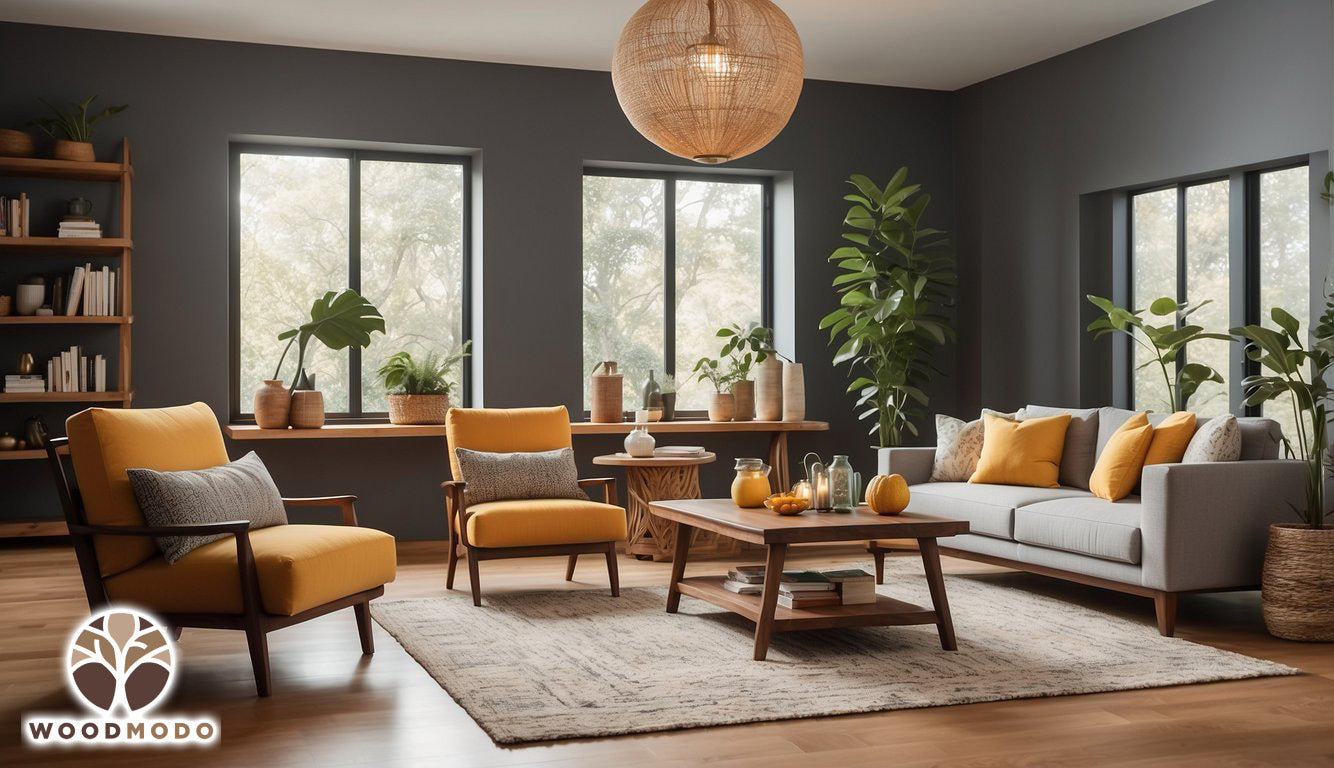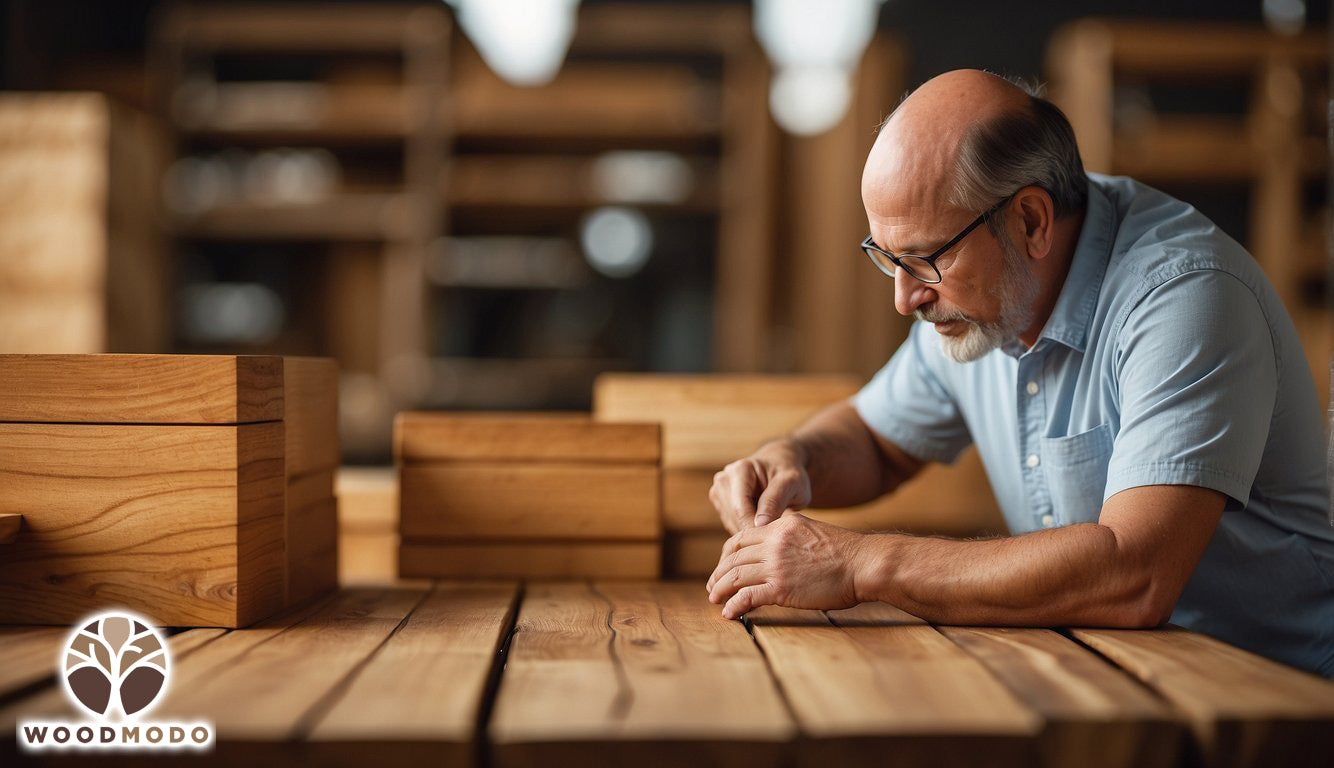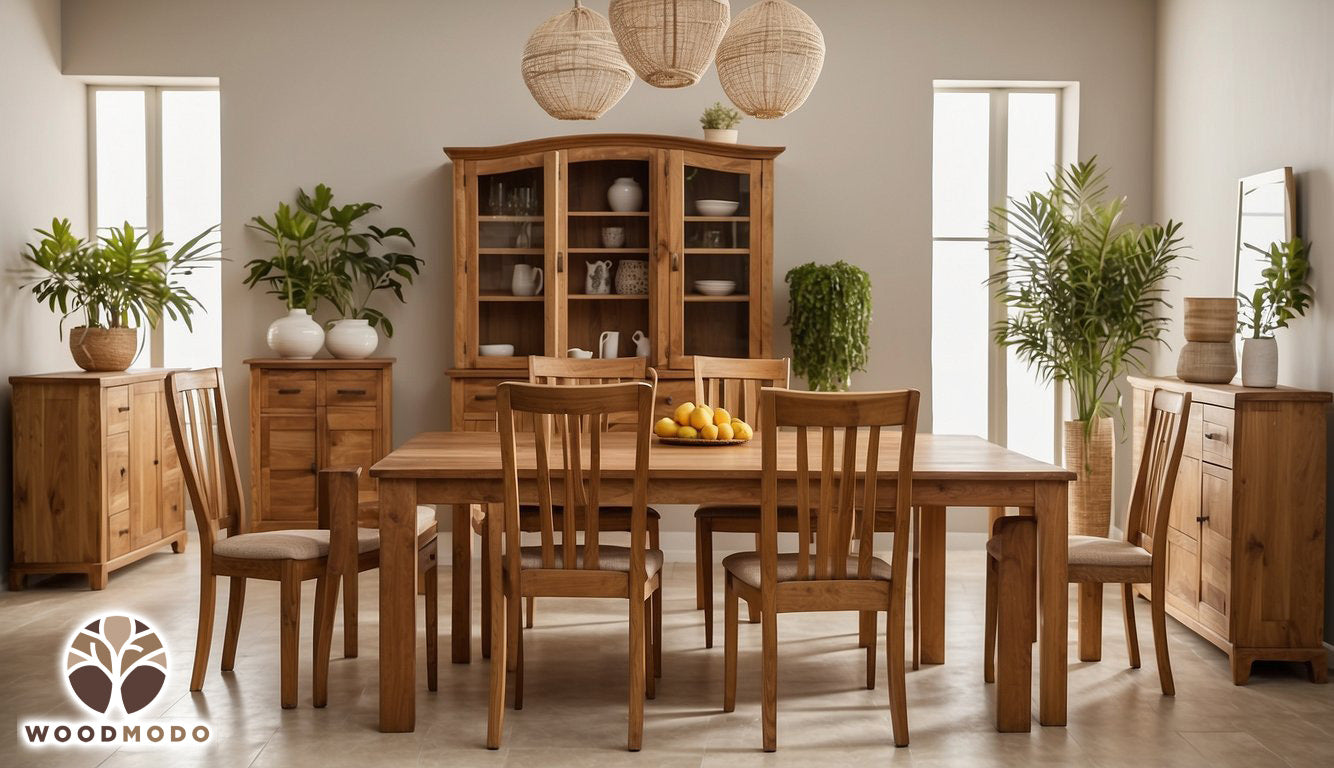When selecting furniture for your home, you have many options when it comes to the materials used. One such material that may have caught your attention is mango wood. Known for its sustainability and unique appeal, mango wood is gaining popularity as a furniture material.
With its warm tones and varying patterns, mango wood furniture could be a charming addition to your space. It's produced from the mango tree, which grows quickly, thus providing a hardwood that's more sustainable than some slow-growing alternatives. Plus, due to its fruit-bearing nature, the wood is often harvested after the trees have passed their prime fruit production years, making use of what might otherwise be waste.
But is mango wood good for furniture? While it stands out for being water-resistant and having a high durability, it isn't without its drawbacks. Mango wood requires treatment to prevent issues like fungus and insect damage. It's also essential to consider regular maintenance to keep it in the best condition. So, before making a decision, you’ll want to weigh these factors carefully against your personal needs and preferences.
Overview of Mango Wood

When you're looking for furniture, you'll find that mango wood is a versatile and sustainable choice favored for its beautiful grain and durability.
Defining Mango Wood
Mango wood comes from the Mangifera indica tree, known primarily for producing the sweet fruit, mangoes. After these trees have finished their fruit-bearing cycle, the hardwood is harvested and repurposed into furniture. It's noteworthy for its hardness and strength, which is reflected by its Janka hardness score of about 1100 pounds-force.
Origin and Sources
This tropical species originates from South Asia but is now cultivated in various countries, including Pakistan, the Philippines, Kenya, and China. As a fast-growing tree, reaching maturity in just 8-12 years, it offers a steady supply of timber for woodcraft, thereby supporting sustainable forestry practices.
Benefits of Mango Wood Furniture

When you're considering new furniture, mango wood offers a combination of traits that strike a balance between aesthetics and practicality.
Durability and Longevity
Mango wood is known for its hardness and density, making it a robust material for your furniture. It's capable of withstanding the rigors of everyday use, meaning you can expect your mango wood pieces to last for years with proper care.
Aesthetically Pleasing
Each piece of mango wood furniture is unique due to the wood's natural variations in color and grain patterns. This diversity allows for a range of finishes, from natural to stained, that can complement any room's decor.
Eco-Friendly Choice
Mature within 8-12 years, mango trees are a sustainable source of timber, much faster than many hardwood counterparts. Choosing mango wood contributes to sustainable forestry practices, as these trees are often planted for fruit production and later repurposed for furniture.
Affordability
Mango wood’s relatively easy workability reduces manufacturing costs, which in turn may result in more budget-friendly pricing for you. Despite its durability and visual appeal, furniture made from mango wood often costs less than items made from other hardwoods.
Mango Wood Furniture Care

Caring for your mango wood furniture involves routine maintenance and safeguarding it from potential damage. Your commitment to these care practices will ensure the longevity and beauty of your pieces.
Maintenance Tips
- Regular Dusting: Regularly dust your furniture with a soft cloth to prevent dust accumulation.
- Humidity Control: Strive to maintain consistent humidity levels to prevent the wood from warping or cracking.
- Cleaning Spills: Wipe up any liquid spills immediately using a soft towel.
Protecting from Damage
- Avoid Direct Sunlight: Position your furniture away from direct sunlight to prevent the wood from fading.
- Prevent Liquid Exposure: Keep all liquids including alcohol, perfumes, and deodorants away from the wood to avoid staining and warping.
- Careful Handling: Move your furniture gently without dragging to avoid scratches and structural damage.
Considerations Before Buying

When you're looking at mango wood furniture, you need to consider how it will fit with your lifestyle and your home's decor. Here are some specific aspects to think about before making your purchase.
Weight and Mobility
Mango wood furniture is moderately heavy, implying it has a substantial feel without being overwhelmingly bulky. Due to its semi-hardwood nature, pieces are generally easier to move compared to denser woods like oak. This makes rearranging your space a smoother process, with less worry about straining your back.
Compatibility With Home Decor
Mango wood tends to have a warm tone and can vary in color from light to dark brown, often with pink or orange hues. Its unique grain patterns make it a versatile choice that can complement a range of home decor styles. Whether you have a modern, minimalist, or rustic aesthetic, consider if the color and style of mango wood furniture will harmonize with your current theme.
Size and Proportionality
Before purchasing, measure your space and consider the dimensions of the furniture to ensure it's proportional to your room's size. Keep in mind that a piece that's too large can overpower your space, while one that's too small may seem insignificant. Aim for balance and scale to create a harmonious look in your room.
Popular Mango Wood Furniture Items

When furnishing your space, you might consider the sustainability and unique appeal mango wood offers. Its adaptability shines across various furniture items designed for durability and aesthetic presence.
Tables and Desks
You'll often find tables and desks crafted from mango wood due to the material's robustness and distinct grain patterns. Whether it's a coffee table with a honey-gold hue or an office desk featuring the wood's natural streaks, each piece stands out with its one-of-a-kind appearance.
- Coffee Tables: Often with a live edge for a rustic look.
- Dining Tables: Sturdy and spacious, available in various stains.
- Office Desks: Designed with functionality, offering ample workspace.
Chairs and Benches
For a touch of warmth and organic charm, chairs and benches made of mango wood are popular choices. Their strength supports daily use, while the wood's color spectrum can effortlessly complement your home's theme.
- Dining Chairs: Solid construction coupled with a comfortable design.
- Benches: Perfect for entryways or as additional seating, with or without back support.
Cabinets and Shelves
Cabinets and shelves in mango wood not only serve as practical storage solutions, but also act as statement pieces. With varied finishes from matte to gloss, these furnishings can amplify a room's character while holding your essentials.
- Bookcases: Open shelving or with glass doors to showcase or protect your collection.
- Storage Cabinets: Keep your belongings organized in a stylish manner.
Comparison with Other Woods

When considering mango wood for your furniture, it's helpful to compare it with other popular woods like teak, oak, and pine to see how it measures up in terms of qualities like hardness, durability, and maintenance.
Mango Wood vs Teak
Durability: Teak is renowned for its exceptional durability and natural oils that make it resistant to pests and the elements, often making it the preferred choice for outdoor furniture. Mango wood, while also durable, lacks the weather-resistant properties of teak and is better suited for indoor pieces.
Cost: Teak is on the higher end of the cost spectrum due to its superior qualities and slower growth rate, whereas mango wood is more budget-friendly given its abundance and quicker maturation.
Mango Wood vs Oak
Hardness: Oak is one of the hardest woods used in furniture making and has a Janka hardness rating significantly higher than mango wood. This makes oak furniture extremely resilient to daily wear and tear.
Aesthetic: Oak's grain is quite pronounced and offers a traditional look, while mango wood showcases a unique pattern with an array of colors and tones, appealing if you're after something with a distinctive appearance.
Mango Wood vs Pine
Strength: Pine is a softwood and thus is less durable and more prone to dents and scratches compared to the harder mango wood.
Maintenance: Pine furniture requires more careful maintenance to avoid damage from impacts and spills. On the other hand, mango wood's denser structure offers better resistance to such incidents, requiring less intensive care.
Market Trends in Mango Wood Furniture

You've likely seen the recent upsurge in popularity for mango wood furniture, and there's good reason for it. Sustainability is a buzzword in the furniture market these days, and mango wood is riding this wave. Due to its relatively quick maturity, this wood is an eco-friendly choice compared to slower-growing hardwoods.
- Aesthetic Appeal: Mango wood offers a variety of colors and grain patterns, which has caught the eye of both consumers and designers. Its unique look can range from light to dark tones, catering to diverse tastes and styles.
- Affordability: Compared to other hardwoods, mango wood is often more wallet-friendly. This makes it a compelling choice for you if you're looking for high-quality furniture without the high cost.
- Functional Durability: Its inherent density means mango wood pieces are sturdy and long-lasting. You can expect your mango wood furniture to handle the wear and tear of daily use remarkably well.
Supply Chain Growth: Mango wood's origin countries like India, Pakistan, Philippines, and more recently, Kenya and China, have adapted their supply chains to meet this increased demand. Your purchase of mango wood furniture likely supports a larger economic trend that bolsters economies in these regions.
Design Versatility: Furniture makers love mango wood for its versatility in designs. Whether you prefer a rustic, modern, or traditional style, there's a mango wood piece to suit your taste.
Remember, while the trends point to a bright future for mango wood furniture, your unique preference makes all the difference when choosing the right piece for your space.
Conclusion

Mango wood furniture has emerged as a sustainable and visually appealing choice for your home. Its fast-growing nature presents a renewable resource. Mango trees mature in about 15 years, which aligns with eco-friendly values.
Remember, any wood furniture needs care, and mango wood is no exception. Proper treatment and regular maintenance can extend the life of your mango wood furniture, making it a functional and cost-effective option for your living space. Embrace the sustainability and charm of mango wood to bring a warm and earthy look to your home.
Take a look at our Artisan collection, featuring all handmade Mango Wood furniture

